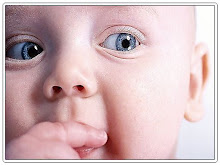You probably won't want to go anywhere with your newborn baby except straight home. She requires almost nonstop attention and feeds. Not to mention the fact that you're probably feeling exhausted! By about 3 months old babies are pretty good travellers. As the child gets older car journeys become more of a disruption.
Health and safety tips
- Removable window shades for your car to shield your baby's skin and eyes from the Sun.
- To make sure your baby's car seat is properly installed and that the seat belts are correctly threaded or have a correctly fitted Isofix base. Your baby should ideally travel in a rear-facing car seat installed on the back seat of your car. Never place your baby's car seat on the front seat of a car with a passenger air bag. Passenger air bags can be turned off in some cars, check your manual before you install your car seat.
- Nappy Rash cream, bags for dirty nappies, enough nappies for the trip and infant paracetamol for relieving aches and fever.
- Babies under six months should be kept out of the sun, and babies between six months and a year should have only limited exposure, especially between 11am and 3pm on hot days. Hats and sun protection of at least factor 20 should be used during summer months.
- If you're flying, feed your baby on take-off and landing to ease any ear pain.
Food and comfort
If you aren't breastfeeding, take formula and add cooled boiled water as needed. Many baby bottle brands now have formula containers that fit into the bottle securely, so that bottles can be made up when needed.
You may be tempted to take along some tins, jars and packets of baby food but, unless you are going somewhere really exotic, you should be able to buy all of these things when you reach your destination. Also check with your airline about taking food containers with you.
If your baby sleeps in a cot, check with your hotel or the company you are booking your holiday with to reserve one when you make your room reservation. Alternatively, take along your own travel cot.
Entertaining your baby
Take a bag containing a few of your baby's favourite toys, plus a couple of new ones. A wide selection of children's toys can be found on www.kiddisave.co.uk
Travel gear
For young babies, a complete travel system takes some of the hassle out of getting in and out of cars and airplanes. A lightweight buggy you can stash in your car boot or a plane's overhead locker makes sense for babies who can sit up. For smaller babies, a baby carrier may be useful.
Here are some tips to help keep baby entertained and comfortable while you are travelling by car.
- Always secure your baby in an age appropriate car seat and ensure it is fitted correctly before you leave home.
- Try and plan the journey around your baby's normal sleep routine. If you plan to travel at night or early in the morning, the roads will be quieter and baby is more likely to fall back to sleep when you start driving.
- Babies are always happiest when they can see one of their parents so if you are not driving, sit in the back seat and keep your baby company.
- Plan your route before you leave home and take clearly written instructions with you, alternatively follow a satellite navigation system.
- Take regular breaks for feeding and changing. You should not breastfeed your baby in a moving car as this would mean taking baby out of their safety seat.
- Take a waterproof blanket with you so that wherever you stop you have a clean, dry surface to change and feed baby on and which baby can have a little play while you have a rest - this will help to tire baby out.
- Take a light blanket to place over the car seat - this will help your baby to feel comfortable and may encourage them to have a nap.
- If you do have to drive, baby car mirrors are readily available and allow you to keep an eye on your baby.
- Play nursery rhymes or song tapes when in the car and sing along, this will help to keep even a young baby entertained.
- Take their favourite toy or comforter to keep them happy.
- If you are travelling during the day, fit a sun shade on the back windows to help prevent glare and stop your baby from overheating.
- Take plenty of drink and little snacks to keep older babies happy.





